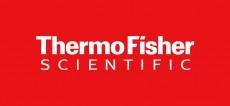US excipients market to rise to $2B by 2018, study finds

Overall, the demand for excipients in the US is projected to rise 4.3% per year to $2bn (€1.45bn) in 2018, volume is also expected to grow by about 2%, according to a new study from the Freedonia Group.
“In dollar terms, we are expecting gelatin to have the fastest growth,” Freedonia analyst Emily Park told In-Pharmatechnologist.com. “In pounds, [sugar] alcohols are expected to have the fastest growth, boosted by their use in parenteral formulations.
“The fastest growing alcohol will be mannitol, although from a low base. I should point out that no product category (in dollars or pounds) is really significantly faster than the others.”
Excipients in oral formulations, such as tablets and capsules, are also expected to see strong growth as shipments of oral preparations are expected to accelerate, according to the Cleveland-based industry market research firm.
“As far as oral formulations, I didn’t do a specific number for this category. However, several of the applications are pretty much only used in oral tablets and capsules. Fillers are predominantly for oral products, and the binders, coatings, and capsules applications are pretty much exclusively for tablets and capsules,” Park told us.
“So if we look at those applications only, we could say that oral solid dose excipients are expected to grow at an above-average pace (in dollars).”
The breakdown of excipients is as follows:
US EXCIPIENT DEMAND (million dollars)
| |||||
% Annual Growth | |||||
Item | 2008 | 2013 | 2018 | 2008- 2013 | 2013- 2018 |
|
|
|
|
|
|
Excipient Demand | 1405 | 1620 | 2000 | 2.9 | 4.3 |
Polymers | 596 | 708 | 890 | 3.5 | 4.7 |
Alcohols | 303 | 331 | 400 | 1.8 | 3.9 |
Minerals | 123 | 140 | 170 | 2.6 | 4.0 |
Gelatin | 95 | 111 | 140 | 3.2 | 4.8 |
Sugars | 38 | 43 | 50 | 2.5 | 3.1 |
Other | 250 | 287 | 350 | 2.8 | 4.0 |
|
|
|
|
|
|
Product versatility will be a key factor impacting product mix in excipient demand moving forward, according to the study, especially as specialty excipient blends play an increasingly important role in pharmaceutical formulation.
Polymers - including cellulose derivatives, povidone, starch, polyethylene glycol, acrylic polymers, and natural gums - are expected to especially benefit from this trend as many of these products can function in multiple applications and are easily formulated with other excipients. The favorable characteristics of polymers may serve to offset the higher prices associated with some polymers, according to Freedonia.












